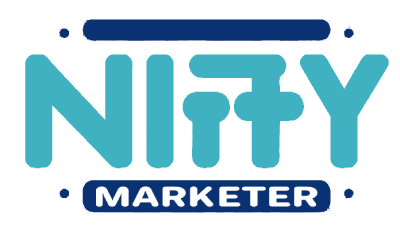Crafting a winning marketing strategy requires more than just creativity and intuition. It demands a strategic approach to budgeting that ensures every dollar spent contributes to a tangible return on investment (ROI). In today’s competitive landscape, where every business vies for consumer attention, mastering the art of marketing budget allocation is essential for success.
Understanding Your Goals and Audience
Before diving into budget allocation, it’s crucial to define clear marketing goals and understand your target audience. Whether it’s increasing brand awareness, driving website traffic, or boosting sales, aligning your budget with your objectives is the first step towards maximizing ROI.
For instance, consider a local bakery aiming to expand its customer base. By analyzing customer demographics and behavior, the bakery can tailor its marketing efforts to reach potential customers effectively. Whether through social media campaigns targeting local food enthusiasts or sponsoring community events, allocating budget resources strategically enhances the chances of success.
Optimizing Channels and Tactics
In today’s digital age, marketers have an array of channels and tactics at their disposal, from social media advertising to email campaigns and influencer partnerships. However, not all channels are created equal, and not every tactic will resonate with your target audience.
To maximize ROI, it’s essential to identify the channels and tactics that yield the highest returns. This requires analyzing past performance data, conducting A/B testing, and staying abreast of industry trends. For example, a fashion retailer may find that Instagram ads outperform Facebook ads in driving conversions among its younger demographic. By reallocating budget resources accordingly, the retailer can optimize its marketing spend and achieve a higher ROI.
Measuring and Analyzing Performance
Effective marketing budgeting doesn’t end with allocation—it also involves ongoing measurement and analysis of performance metrics. By tracking key performance indicators (KPIs) such as conversion rates, click-through rates, and customer acquisition costs, marketers can evaluate the effectiveness of their campaigns and make data-driven decisions.
For instance, consider a software company launching a new product. By implementing tracking pixels and leveraging analytics tools, the company can monitor user engagement across various marketing channels. If a particular ad campaign fails to generate the desired results, the company can reallocate budget resources to more successful channels, ultimately maximizing ROI.
Adapting to Market Dynamics
In today’s dynamic marketplace, consumer preferences and industry trends can shift rapidly. As such, effective marketing budgeting requires agility and adaptability. Whether it’s capitalizing on emerging trends or pivoting strategies in response to changing consumer behavior, staying flexible is key to maximizing ROI.
For example, during the COVID-19 pandemic, many businesses shifted their marketing strategies to accommodate remote work and digital engagement. Restaurants offered contactless delivery options, retailers enhanced their e-commerce platforms, and fitness studios launched virtual workout classes. By reallocating budget resources to meet evolving consumer needs, these businesses were able to maintain engagement and drive sales despite challenging circumstances.
Building Brand Equity for Long-Term Success
While maximizing short-term ROI is important, it’s equally crucial to invest in building long-term brand equity. By fostering brand loyalty and establishing a strong brand identity, businesses can secure a competitive advantage that transcends individual marketing campaigns.
For instance, consider a luxury fashion brand known for its timeless designs and impeccable craftsmanship. Despite the higher upfront costs associated with premium materials and artisanal production methods, the brand commands a loyal customer base willing to pay a premium for its products. By investing in brand-building initiatives such as exclusive events, influencer partnerships, and immersive brand experiences, the brand reinforces its unique value proposition and cultivates long-term customer relationships.
Conclusion
In conclusion, maximizing ROI with effective marketing budgeting requires a strategic approach grounded in data, analysis, and adaptability. By aligning budget allocation with clear objectives, optimizing channels and tactics, measuring performance, adapting to market dynamics, and investing in brand equity, businesses can achieve sustainable growth and competitive advantage in today’s fast-paced marketplace.
Remember, the key to success lies not only in how much you spend but how wisely you spend it. By prioritizing ROI and continuously refining your marketing strategy, you can unlock the full potential of your budget and drive meaningful results for your business.
What are your thoughts on maximizing ROI with effective marketing budgeting? Share your experiences and insights in the comments below!





